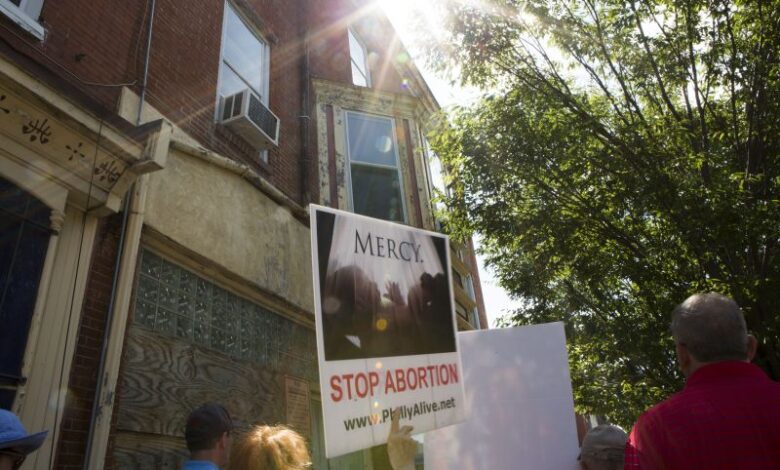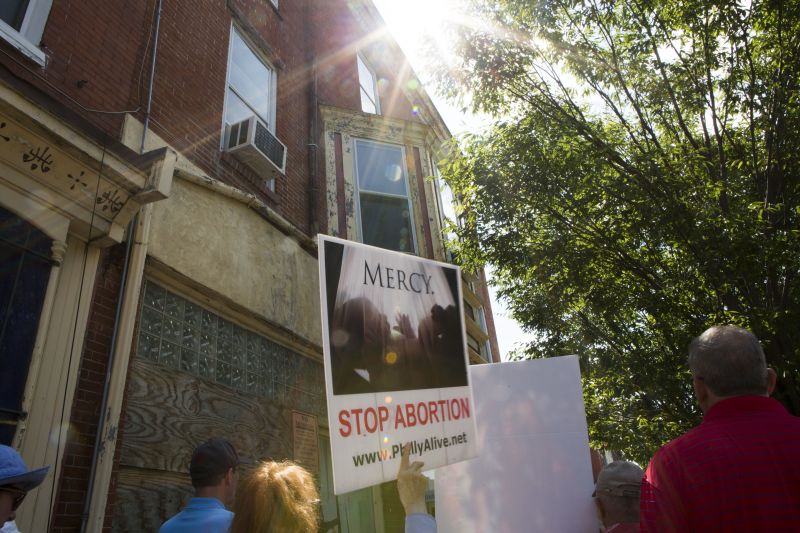Post-debate explainer: The truth about late-term abortions in the United States

 The Pro-Life Coalition of Pennsylvania holds a "Mercy Witness for Life" rally on July 23, 2016, outside of the former site of Dr. Kermit Gosnell's closed abortion clinic in Philadelphia. Gosnell was convicted of the first-degree murder of three infants, the involuntary manslaughter of his patient Karnamaya Mongar, and other felony counts. / Credit: Jessica Kourkounis/Getty Images
The Pro-Life Coalition of Pennsylvania holds a "Mercy Witness for Life" rally on July 23, 2016, outside of the former site of Dr. Kermit Gosnell's closed abortion clinic in Philadelphia. Gosnell was convicted of the first-degree murder of three infants, the involuntary manslaughter of his patient Karnamaya Mongar, and other felony counts. / Credit: Jessica Kourkounis/Getty Images Washington, D.C. Newsroom, Sep 13, 2024 / 06:00 am (CNA).
During Tuesday night’s presidential debate with former President Donald Trump, Vice President Kamala Harris refused to say whether she opposes late-term abortions and denied that they happen in the United States.
However, more than a dozen states, in fact, allow on-demand abortions after the point of viability, and nine of those states permit abortions throughout the entirety of pregnancy.
What’s more, studies from pro-abortion groups and the Centers for Disease Control and Prevention show that thousands of abortions happen late into pregnancy every year.
“Nowhere in America is a woman carrying a pregnancy to term and asking for an abortion,” the vice president claimed. “That is not happening — it’s insulting to the women of America.”
During the debate, Trump said Harris’ vow to codify Roe v. Wade into national law would legalize late-term abortion. The now-defunct landmark Supreme Court ruling forced states to permit abortion at least until the point of fetal viability, at which point the unborn child could survive outside the womb. The exact moment of fetal viability is different for every pregnancy, but this usually occurs in the 23rd or the 24th week.
Trump said Harris would support abortion in “the seventh month, the eighth month, [and] the ninth month,” to which Harris retorted: “That’s not true.”
When asked by ABC debate moderator Linsey Davis whether she would support any restrictions on abortion, Harris ducked the question and said she supports what she called the “protections” of Roe v. Wade. Harris used the word “protections” in reference to making abortion legal, not to to mean protecting the unborn.
Although ABC’s debate moderators — Davis and David Muir — intervened to “fact check” Trump on several of his arguments, neither of them corrected Harris to inform viewers where late-term abortions are legal and occur in the United States.
However, Roe v. Wade did not prohibit states from allowing abortion much later into pregnancy, some of which do permit abortion in the seventh, eighth, and ninth months.
In nine states and Washington, D.C., abortion is legal for the entirety of pregnancy, until the moment of birth, for any reason. In one state, elective abortion is legal through the second trimester, which concludes at the end of the 27th week of pregnancy. In another four states, abortion is legal through the 24th week of pregnancy, regardless of whether the unborn child has already reached viability.
States where on-demand late-term abortion is legal
The most permissive abortion laws are in Alaska, Colorado, Maryland, Michigan, Minnesota, New Mexico, New Jersey, Oregon, Vermont, and the District of Columbia. A woman can procure a legal abortion through the ninth month of pregnancy, until the moment of birth, for any reason.
Minnesota, the home state of Harris’ running mate, Gov. Tim Walz, has some of the most permissive pro-abortion laws in the country. Walz signed legislation in January 2023 that declared abortion “a fundamental right” and prohibited local governments from taking any action that interferes with that legal right. This provided even stronger protections for Minnesota’s laws on abortion, which permit the procedure until the moment of birth.
Virginia allows elective abortion through the second trimester of pregnancy, which ends in the 27th week. This is three or four weeks after the unborn child could survive outside the womb.
In four other states — Massachusetts, Pennsylvania, Nevada, and New Hampshire — abortion is legal in the 24th week of pregnancy, regardless of whether the unborn child is viable. About a dozen states allow abortion up until the point of viability, which is often determined by the physician, who may be an abortionist. More than 20 states restrict abortion earlier than viability.
How often does late-term abortion happen?
State laws vary on what data abortion clinics must record and report to the government. Most states provide some data to the federal government, but the Centers for Disease Control and Prevention (CDC) does not offer a comprehensive breakdown of the exact gestational ages of preborn children at the time of an abortion.
However, the CDC does report its estimates of how many abortions occur in the 21st week of pregnancy or later. In 2019, the CDC estimated about 4,882 abortions were performed at least 21 weeks or later into pregnancy. The data is incomplete because it excludes the nine states that permit abortions at that stage of pregnancy and the District of Columbia.
The pro-abortion Guttmacher Institute, which provides estimates through voluntary surveys, reported that about 0.9% of abortions were conducted in the 21st week or later in 2023. The report estimated more than 1 million total abortions, which would mean that more than 9,000 abortions occurred in the 21st week or later.
If the Guttmacher Institute’s reporting is correct, this would mean that, on average, between 24 and 25 abortions in the 21st week or later occur every day in the United States.



